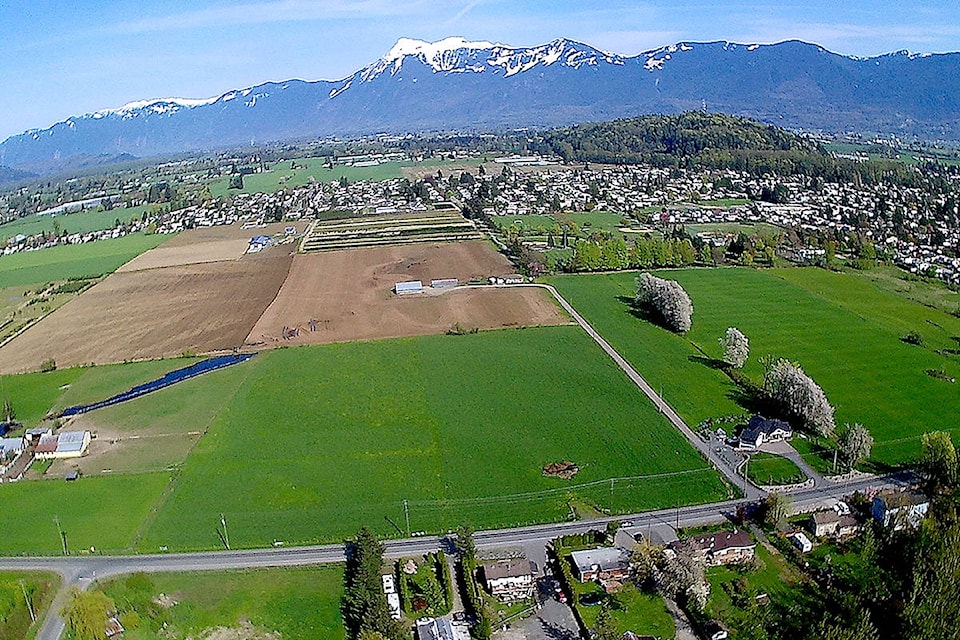Proposed changes to revitalize the Agriculture Land Reserve are finding favour with some key voices in the Fraser Valley on the heels of broad consultation and feedback gathering.
The concept of “farmland for farming” was front and centre Monday in the B.C. government messaging about Bill 52, with the aim of restoring the integrity of the ALR to one zone.
Coun. Chris Kloot, who was a member of Agriculture Minister Lana Popham’s advisory committee, said their approach was “agricultural first” from the start, and the proposed changes are heading in “the right direction.”
READ MORE: Committee to overhaul ALR
The mega-mansion issue was addressed by limiting new house sizes to less than 500 square metres [about 5,400 square feet], except through ALC application in cases where it would support farming; and requiring ALC approval of any additional residences in the ALR to curb non-farm development and speculation.
Also they’re planning to crack down on the dumping of construction debris, toxic waste and other fill in the ALR that can irreparably damage soil on farmland.
“I certainly think these are good steps in the right direction,” said Kloot. “Soaring agricultural land prices, often due to speculation for uses other then farming, or certainly not making it easier to farm, are often times squeezing farmers out of our area.
“We want to encourage farming in Chilliwack and help existing farmers in whatever size and scale they may be, and also support young farmers wanting to get into a rewarding career, and I am confident these steps will help towards achieving that.”
Given that the ALR can be seen as an “option and/or an opportunity for uses other then farming or ranching,” the ALR needed strengthening, said Kloot, who is also a chicken farmer, and a realtor.
“In order to combat some of the misuses and imbalances that currently exist, it was important to improve on the system,” said Kloot.
READ MORE: Lots of public input sought
University of the Fraser Valley geology Professor Lenore Newman was also on the minister’s nine-member advisory committee looking at the ALR. Newman is also Canada Research chair in food security and environment at UFV.
“I’m thrilled to see this first set of changes come before the house,” Newman said.
“Speaking as a scholar, the mega-mansion issue particularly angers the public because it smacks of unfairness — wealthy people can buy five acres at a discount, pave four of it, and have someone farm the remaining acre to qualify for shockingly low taxes.
“Mega mansions are bad for farming but they also undermine the social compact required for zoning to work.”
The monster home can indeed present a threat to farmland, Kloot agreed.
“This land is usually available at a cheaper price and a larger parcel provides ample privacy and space. However, this reduces access to farm land if the owners chose not to farm or lease their land for farming.”
There was “near unanimous support” for reducing the maximum house size, and it is clear local governments across the province are struggling with this.
“Much work had been done in 2011 on the Ministers Bylaw Standard, and wisdom was seen in giving this consideration given the time constraints of the committees mandate, and that is why you see a maximum home size of almost 5400 sq feet being proposed, but it is worthwhile to note that is still a very large home,” Kloot underlined.
City of Chilliwack took the “pro-active step” to adopt a farm home plate in 2017, Kloot stressed, in order to curb the siting of residential uses in the ALR and to protect the viability of agricultural land within our community.
Coun. Kloot said he saw support “from stakeholders and the public” for the removal of the artificial distinction between ALR lands in Zones 1 and 2.
“The assumption that lands in Zone 1 require more protection because of higher development pressures is unfounded,” Kloot asserted. “Fairness is also a major consideration, and we heard loud and clear from the majority of the stakeholders we consulted with that they felt the two-zone ALR was unfair, and undermined the concept of a province wide ALR with the same rules and regulations.
These steps will definitely strengthen the agriculture sector “if” there is the political will to enforce it, said Tom Baumann, an associate professor in the UFV agriculture department.
Reinstating a single zone, where protection everywhere the same, “is a good step in my opinion,” Baumann said, “so we do not lose land in areas that are deemed less valuable for agriculture, whereas modern agriculture can happen on challenging sites and on difficult soils, as we have greenhouses, barns, table-top production combined with high tunnel systems that are not necessarily in native soil.”
Protecting the ALR is still key after all these years.
”Pictures from Mt. Cheam taken 30 years ago and taken recently show urbanisation where houses sprawl into the agriculture land reserve, as well as roads and industrial lands encroach on agriculture land in a significant way.
“We all agree we need jobs and need to live somewhere, but urban planning, energy corridors, roads etc. must not assume that agriculture land is a reserve for those particular uses, but for food production and beautification of the very same developments.
“Agriculture land has been, in my opinion, abused for purposes other than agriculture and if we are serious, and statistics show the general population is, about keeping local food production, rather than relying on imports from who knows where, outside our control of reghulations, we need to protect the ALR,” Baumann added.
@CHWKjourno
jfeinberg@theprogress.com
Like us on Facebook and follow us on Twitter.
